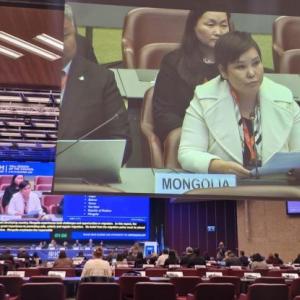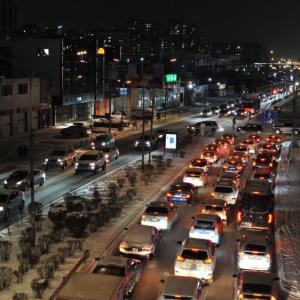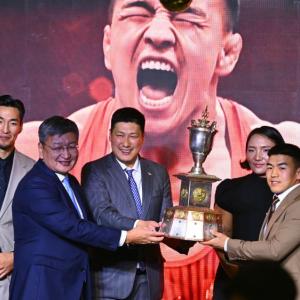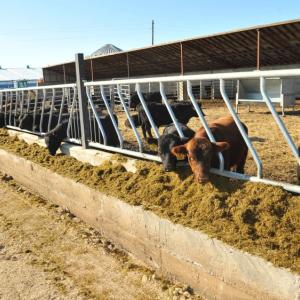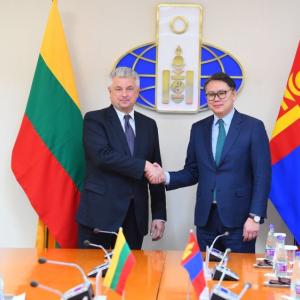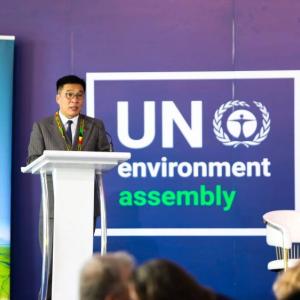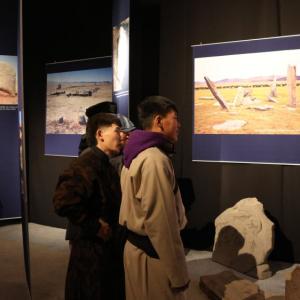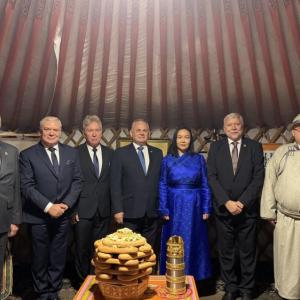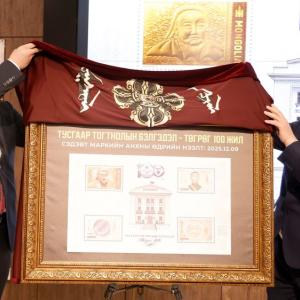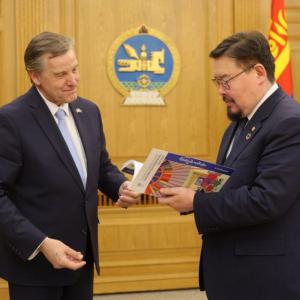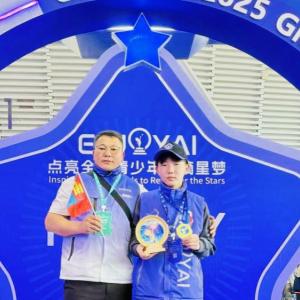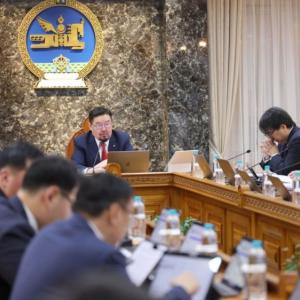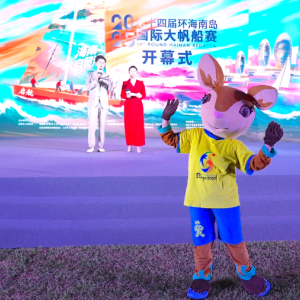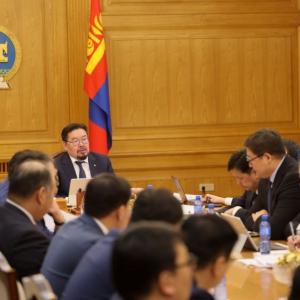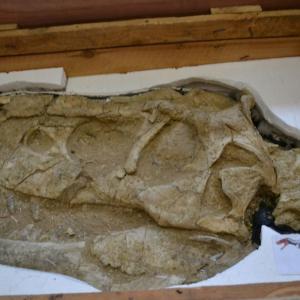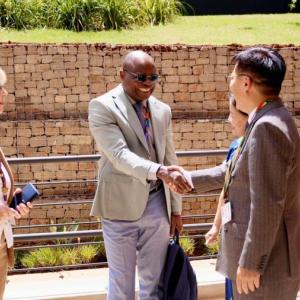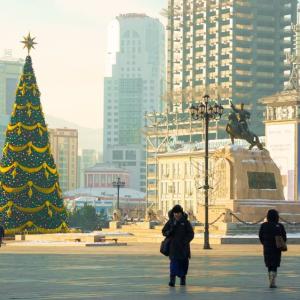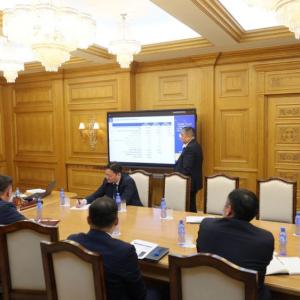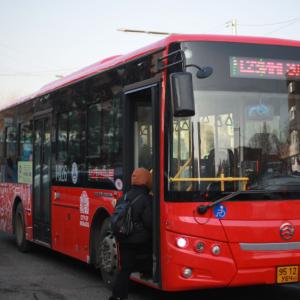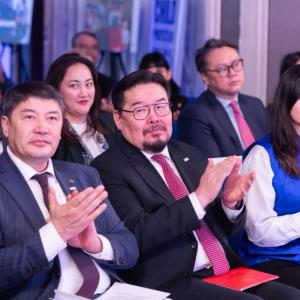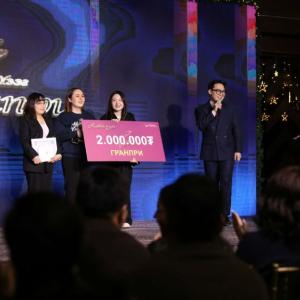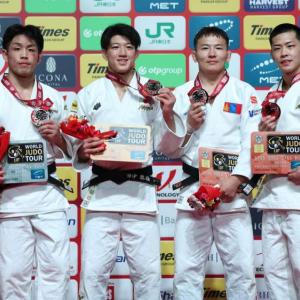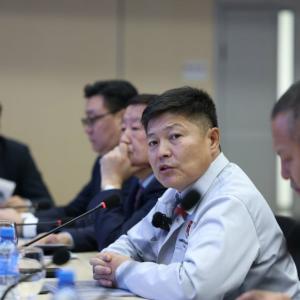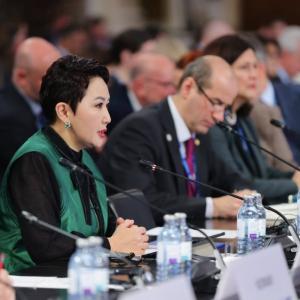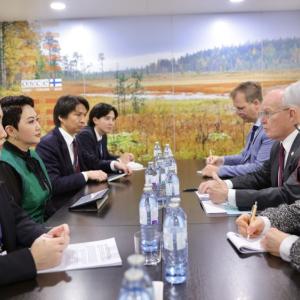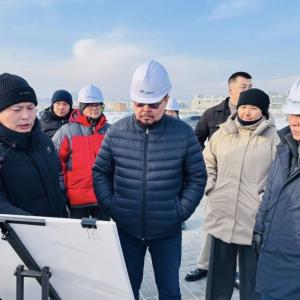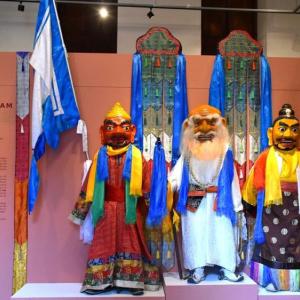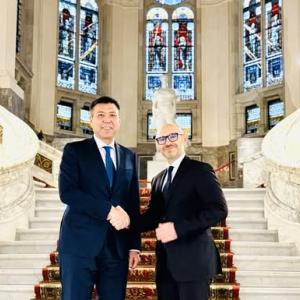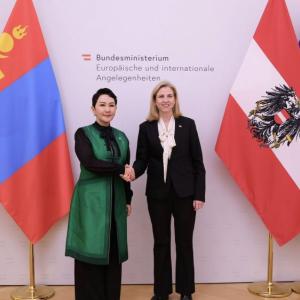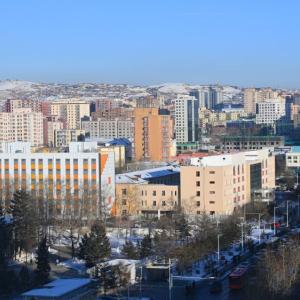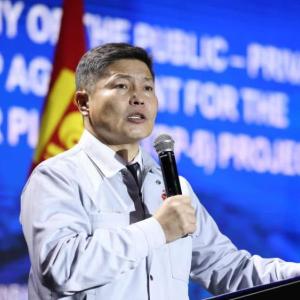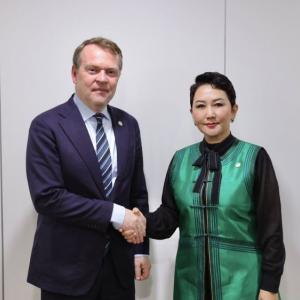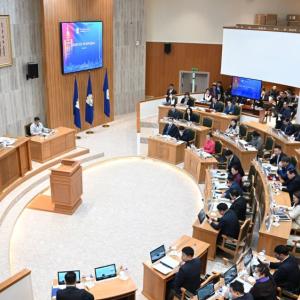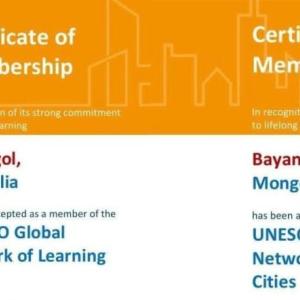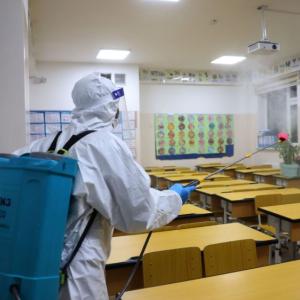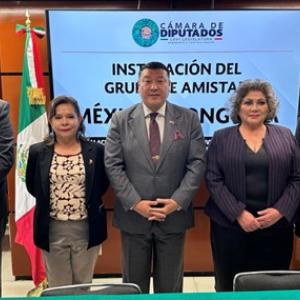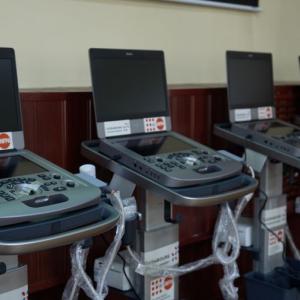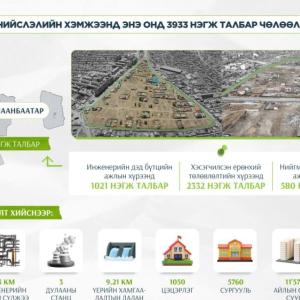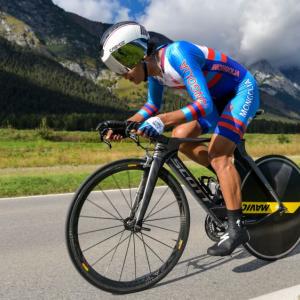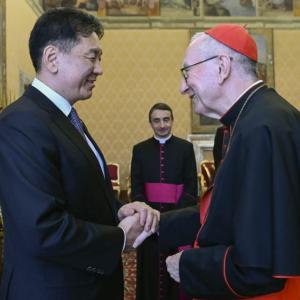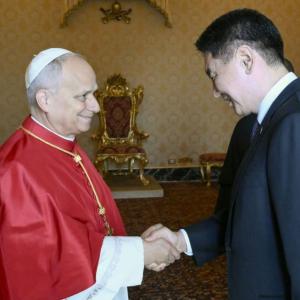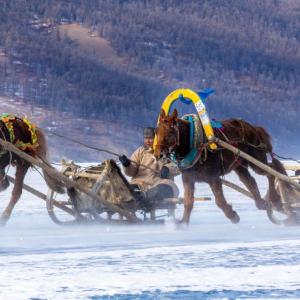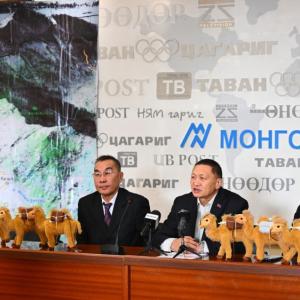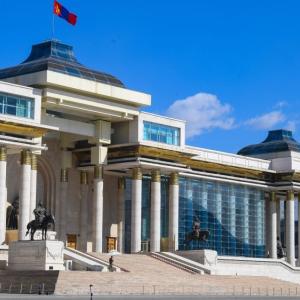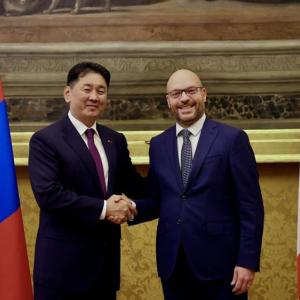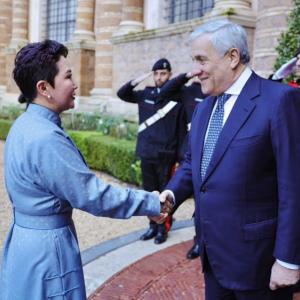Tugsdelger Chinbat: Youth Wants to Contribute to the Green City Development
Interview
Ulaanbaatar, March 7, 2025 /MONTSAME/. We spoke with Tugsdelger Chinbat, the General Architect of Ulaanbaatar city. As the youngest and first female architect to hold this position, she brings a fresh perspective to the city's urban planning.
You were recently appointed as the General Architect of Ulaanbaatar city. How did you feel when you were offered the position? Did you find it intimidating?
-Yes, I was intimidated. While I was in Japan, I always thought about contributing to Mongolia and worked on several projects with that in mind. Even during my time at the Asian Development Bank (ADB) or the World Bank, I sought out opportunities to work on projects in Mongolia and gather as much information as possible. When you're abroad, it’s easy to feel disconnected from your home country. But as it turned out, I returned sooner than I expected! (laughs).
-Many people may wonder, "What exactly does the General Architect of Ulaanbaatar do?" Could you please explain the responsibilities of your position?
-My main responsibility is managing the Ulaanbaatar city's General Development Plan. This involves decisions on how the city should grow, whether to establish sub-centers, where roads should be built, how public transportation should operate, and how to integrate green spaces. It encompasses all aspects of urban development. Ultimately, this role is about serving the people of Ulaanbaatar, and it's a public service position at its core.
-So, could we say that the General Architect is the most aware of the city's urban challenge a person?
-Yes, that's true. From the moment I assumed the post General Architect, I saw that everyone here deeply understands the city’s challenges and is wholeheartedly committed to resolving them. From my side, I want to contribute to it in every possible way, to help improve the city.
-The appointment of young woman to this post has garnered significant public attention. When the Mayor of Ulaanbaatar appointed you, he emphasized your role as a representative of the younger generation. What are your thoughts on the Mayor's emphasis on youth and his desire to incorporate fresh perspectives into Ulaanbaatar's urban planning?
-Gender issues often come up in urban planning discussions worldwide. We need to consider all residents of the city—men, women, children, and the elderly. In most countries, men tend to hold roles like this, which can lead to gaps in planning for women, such as inadequate seating for pregnant women on buses or a lack of designated parking spaces. Having women in decision-making roles can help ensure that urban planning addresses the specific needs of women. Therefore, the Mayor's decision to appoint a young woman to this position was bold and forward-thinking.
-Very few female architects are recognized globally, with Zaha Hadid being one of the most famous. As a professional, which female architects inspire you the most?
-Indeed, as you said, there are very few female architects who have made a significant impact on world history. Zaha Hadid is someone I admire greatly. I've had the privilege of seeing several of her iconic buildings. Once, while walking in New York, I saw a building and immediately thought, "This has to be Zaha Hadid's work." I looked it up on my phone and confirmed it was hers. It was such a thrilling moment to recognize her style, and I even took pictures. It's magnificent how an architect's signature style can become so recognizable that you can identify their work at a glance.

-I’m sure you have some ambitious goals to accomplish as the General Architect. Could you please share one of them?
-There are many! (laughs). Ulaanbaatar faces numerous challenges due to poor urban planning, such as air pollution, traffic congestion, and soil contamination. However, citizens and communities should not rely solely on a few city institutions; instead, they should adopt the mindset: “I am a citizen of this city. I have the opportunity to bring about change, so let's contribute together.” I hope this shift in attitude will continue to grow. Simple acts, such as refraining from littering and protecting newly planted trees, can make a difference. As a young woman, I am eager to inspire people to care for their city, and I have been discussing these ideas regularly with my team.
-There has been a discussion for a long time about restoring the Selbe River, which runs through some of Ulaanbaatar’s most populated areas, and developing a tourism zone around it. What are your main priorities for making Ulaanbaatar more citizen-friendly?
-Green spaces are a top priority for me. Unfortunately, their value is often overlooked by both people and the government because they don't seem profitable. Green spaces are much more than just parks. While they are important for families and children, they offer many invisible benefits. For example, they absorb floodwater like sponges and help reduce the stress associated with urban living. Simply looking at greenery can make you feel like taking a deep breath. Walking through a well-designed green area can lift your mood. If a person's journey home by bus is along a pleasant route with appealing green areas, they might choose to walk for an hour or more. This could help reduce traffic congestion. These intangible benefits touch every city resident, which is why I've always been passionate about incorporating green spaces into urban planning.
-We hope that this new era of Ulaanbaatar’s green spaces will be remembered in your name, Architect Tugsuu. Could you please tell us about some of the projects you've worked on and which one you are most proud of?
-I’ve done extensive research on urban planning, particularly in transportation and buses in Mongolia. Japan is renowned for its Transit-Oriented Development (TOD). The planning approach in America is quite different. During my time at the World Bank in Japan, experts from 10 countries and I had the opportunity to get acquainted with Japanese projects. We were all impressed by how TOD can revitalize and rejuvenate a city.
One of my recent projects focused on green spaces, which was jointly implemented with Yokohama City, Japan. Having lived in Yokohama and graduated from Yokohama National University, this project was particularly exciting for me. I learned a lot from city officials about how even small adjustments to green spaces can significantly enhance their benefits, and how regular maintenance leads to sustained improvement. The projects that challenge and teach you the most are often the ones that are closest to your heart.
-Architecture seems closely related to art. Do you practice arts or sports?
-I regularly engage in sports. While pursuing my Ph.D. in Japan and juggling two jobs, sports became a vital meditation for me, especially during the pandemic. I exercised four to five times a week. As a child, I loved dancing and singing. In Tokyo, I visited many museums and enjoyed observing the buildings whenever I traveled.
-Could you please share which sports you practice, or is that a secret?
-I used to focus on weightlifting and gym workouts. I’ve tried several sports through short courses, and I dream of competing in one someday. Recently, I’ve been into boxing.
-People must assume you draw a lot as an architect, right?
-That’s a common assumption, but to me, the most important skill isn’t drawing—it’s the ability to see things from a “bird’s-eye view.” Whether it’s designing a building or planning a road, you need to understand how it will impact the people in one area while considering the needs of those in another. When I’m stuck on a problem, I remind myself, “Tugsuu, imagine yourself standing on the table and looking down from above.”
-When girls are young, they often dream of becoming flight attendants or dancers. What led you to choose architecture?
-When I was 16, I moved to Ulaanbaatar and found the city's noise and dust overwhelming. It made me realize how much stress our environment can add to our lives. While studying at Shine Mongol School in Mongolia, I thought I’d become a civil engineer. But then an urban planner visited our school and spoke with us. I've always been curious and eager to undertake challenging tasks, and at the time, urban planning was something new and intriguing. I imagined it as a field for cool and smart people, and that’s what initially drew me in.
-Now you’ve become one of those cool and smart people, haven’t you?
-Not quite yet! (Laughs.) It’s a challenging job, but my passion keeps me going, and my parents' support has been significant.
-Life in a big city must be full of excitement. Are you working around the clock?
-There's always a lot to do, but as long as I stay hydrated, exercise, and get enough sleep, I hope everything will be just fine.
-I heard that you speak both Japanese and English.
-It is true. Both languages have been incredibly useful for my projects and studies. I’ve also given presentations internationally.
-It sounds like you didn’t spend your childhood in the city but rather in the countryside, is that correct?
-I was born in Ulaanbaatar, but I lived in Uvurkhangai aimag for a while before moving to the city. I was the kind of girl who loved spending summers in the countryside.
-You mentioned your love for observing buildings. In your opinion, which part of Ulaanbaatar has the best architecture?
-Downtown. The area south of the State Department Store of Mongolia, which was initially built by the Russians, has some of the best architecture, even though it’s old. Lately, modern buildings have started changing the city’s look as well. I recently picked up a Japanese architect from the airport who had worked in China and Russia. As we were driving, he said, "This building looks Chinese, or maybe Russian? Oh, wait, I’m not sure... Oh, it’s Mongolian!" It made me realize how Ulaanbaatar’s architecture appears to foreign eyes.
-Does that mean Ulaanbaatar is becoming more international?
-(Laughs) Well, Japanese architecture, for example, is very minimalist - concrete buildings with little paint, and the interiors are often plain. My professor used to say, "Ulaanbaatar is actually a clean city; it just needs a bit more care. Compared to some other Asian cities, it's quite manageable.” That was about six or seven years ago, and I still believe that with a bit more effort, we can significantly improve Ulaanbaatar.
-When your professor said "clean," was he referring to the air quality?
-No, he was talking about the city's general appearance. My professor had traveled extensively, not just in Asia but also in South America, such as Brazil, advising on urban planning in cities with significant challenges. So, he was likely comparing Ulaanbaatar to those places.
For the city’s appearance, we don’t currently have a color code for buildings, but we’re discussing introducing one where certain area would have a unified color scheme. We’re also focusing on preserving historical buildings as part of our urban development efforts.
-Mongolia recently hosted the World Women's Forum. In your opinion, how women-friendly is Ulaanbaatar, and what do you envision for its future development in this regard?
-Research shows that women tend to move around more than men. They are constantly running errands—taking their children from school, visiting the pharmacy, or shopping. Men, on the other hand, generally commute between home and work. Women also drive less than men, so they walk or rely on public transport more often. This highlights the need for a transportation system designed with women in mind. Public transportation improvements, like designated seating for pregnant women, and security measures, such as night-time bus cameras, are crucial for creating a safer and more inclusive city.
-You have traveled to many countries. What would you say are the unique characteristics of Mongolian women?
-Mongolian women are notably strong and independent. They respect others' opinions but maintain their own solid stance. While studying at the University of Tokyo and participating in the women’s association, I noticed that Mongolia places a high priority on educating girls, which gives them this strong foundation.

-It can be said that the work of the General Architect of Ulaanbaatar is highly visible to the public and can be subject to intense scrutiny. How do you handle such criticism?
-Criticism is always difficult. However, it’s important to filter out what’s constructive from what isn’t. As a professional, if you are confident in your decisions and have the support of your team, you should stand firm without fearing criticism.
-You just mentioned your team. How are you forming your team at this stage?
-I haven’t been in this position for long, but we need more skilled people, as we are facing a shortage of human resources in this field. I’d like to invite anyone passionate about contributing to the city's development to join us.
-The city's population is continually growing. What are your thoughts on the policies of Ulaanbaatar city to manage overpopulation?
-I agree that, even by global standards, overpopulation occurs if there are no limits at the policy level. While Mongolia has vast lands, almost half the population is concentrated in Ulaanbaatar.
-Do you think Ulaanbaatar will expand more vertically or horizontally in the future?
-By establishing sub-centers, the city can develop without over-expansion. Considering how Mongolia is likely to evolve over the next 50 to 100 years, it is undeniable that Ulaanbaatar city will continue to expand significantly. Take the rapid growth of the Yarmag area of Ulaanbaatar over the past five years as an example. It's possible we might even have satellite cities in the future. In other words, this means we need to implement policies to prevent the city from expanding too far. As the city grows, services will become more distant, leading to various problems, including the time it takes to travel from the suburbs to the center. Therefore, planning for sub-centers is essential to decentralize and address these issues.
-What are the unique challenges and benefits of being a woman in a leadership role?
-Leadership positions offer the opportunity to make decisions and drive change—this is a universal truth. For me, it's an incredible opportunity to help shape Ulaanbaatar’s future. The challenge lies in overcoming skepticism from those who might question, "What does this young woman know?" given that I had spent years abroad. However, I am prepared for that. With a clear vision and long-term goals, minor setbacks become less daunting. So, I am confident that everything will turn out well.
-Best of luck in bringing to life the Ulaanbaatar you've envisioned and crafted in your mind.
-Thank you very much.

 Ulaanbaatar
Ulaanbaatar






